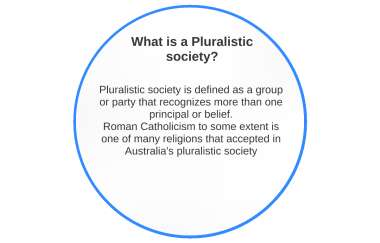
Kitsch is a lowbrow, garish form of art. Kitsch can also be used to describe Literature, Art, and Films that include cultural icons or popular culture. This article will show you examples of kitsch. Hopefully, it will help you define this type of work and appreciate its beauty. You can read on to learn more about the various forms of kitsch and how artists spot them.
Art that's garishly nostalgic, very low-brow, and extremely naive
Kitsch art is a form of low-brow art that has become increasingly popular over the last decade. It is often nostalgic and retro. This style's uniqueness is due to its historical context. Art dealers used cheap wares to disrespect taste. Kitsch is anything that's not high-brow. Kitsch art can be found in movies, festivals, awards and even arty products.
Kitsch art is loved by some for its nostalgia and sentimental appeal, but others see it as low-brow and not fashionable. Kitsch art is often seen as a garish, sloppy piece of art that is unsuitable for collectors who are high-end.

Literature using cultural icons or popular symbols
Kitsch refers to a type of lowbrow art which makes inappropriate use popular cultural icons. These works are often unsubstantial and often extravagant, and designed to appeal to a broad audience. Kitsch comes from the German word kitsch, which means "trash" or trashy. Kitsch is often associated with sentimentality or gaudiness and is often mocked.
Kitsch was opposed strongly by the avantgarde who felt it lacked the sophistication of fine art. Kitsch came to be seen as ironic, humorous and earnest in the 1950s. Its poor taste has led to some people deeming it to be demeaning. Kitsch is still a delight that can be enjoyed, even if it's not offensive.
Films that use kitsch
Kitsch is an entertainment form that is both universally loved and popular. Its unpretentious lightheartedness, and uninspiring usage of cinema can all be seen in almost any type of entertainment. This term is used to describe films that are produced commercially but have a hint of kitsch. Although kitsch can be seen as an aesthetic component, it can also have a negative connotation.
Although kitsch is often associated with AngloSaxon culture area, it is a common element of film- and TV production. Different cultures have different interpretations of kitsch, and different genres use the term for different purposes. Kitsch can also be used to explore aesthetic conventions as well as social prejudices and political ideologies. This article will discuss how kitsch art is used in movies and TV series to examine the meanings of their artificiality.

Kitsch-using artists
Kitsch is an artistic type in which artists make art by downplaying the structure of an image. C.M. Coolidge created a painting depicting dogs playing poker at the beginning of the 20th Century. Other kitsch artists include Margaret Keane, who painted portraits of waif children and used large staring eyes on all her subjects.
Kitsch is often seen as a response to 19th century art. It exaggerates sentimentality and melodrama. It's not bad but it's close to the camp concept. It is possible to not see the artist's intention and not view the work critically.
FAQ
How did pop culture develop?
Technology drove the development of popular culture. It developed as people became more mobile. The invention of the radio enabled mass communication. This allowed for the rise of television and the birth of the internet.
People started using computers at home and were exposed to computer games. These games were originally played on consoles like Sony Playstation 3 or the Nintendo Wii. They are now becoming available for free online. Many people choose to play videogames instead of watching television.
Video games are very popular among teens and children. These games can be played by one person or with others via the internet. Call Of Duty games and Grand Theft Auto have a lot of violence. Some parents are worried about their children playing these video games. Some people find it thrilling to see what happens when a character is killed.
Music videos are another way pop culture influences youth. They provide information about celebrities and current trends. Many young people love to watch them. Music is an integral part of our lives.
Special effects are used to enhance songs in music videos. Rappers may use makeup and wigs to make themselves more appealing. To show off their bodies, some musicians are willing to put themselves through extreme physical hardships. Many singers are able to sing while wearing costumes.
Music is available in a wide variety of formats today. You can listen any music you wish. But this isn't always good news. Music can be a motivator for violence. People become angry when they hear certain lyrics and words. Sometimes, they even commit crimes.
This happened recently with rapper 50 Cent. A line in his song Get Rich Or Die Trying reads: "I'm gonna shoot a mamafucker down / It's not clear why but it might." Some people thought that this song meant that he would cause death. He was threatened by a man who called him. 50 Cent updated the lyrics. Now it only says: "I'll shoot a bitch down/ I don't know why but I just may."
Popular culture is essential. We must understand its effects on us. If we don’t understand how it affects us, we won’t be able prevent its harmful effects.
What are some positive aspects of pop culture?
Pop culture doesn't have to be bad. It gives people something to discuss. Pop culture allows people to express themselves creatively. Pop culture can help artists promote their work.
Pop culture has the greatest quality, in my opinion. It brings people together. Everyone wants to watch the same shows. Everyone enjoys the same music. People like the same movies. Pop culture makes it easy to connect.
It is not healthy for everyone, however. Some movies glorify violence. Some television programs make fun of people who have mental disabilities. Others encourage their fans and followers to get high.
What can we do about pop culture's negative aspects?
We should avoid negative aspects of pop culture. It shouldn't be allowed to influence us. It can cause problems for our health. It can lead to crime. It can even cause problems in our relationships.
We should also think about whether pop culture is helping or hurting society. Is pop culture promoting good values or negative ones? Are people being indoctrinated to do terrible things?
Finally, let us ask ourselves whether or not we are happy in the world that we live. Do we enjoy the music that we listen to? The TV shows that we watch What clothes are we wearing?
If we are concerned about our future, it is essential that we take responsibility and be accountable for our actions. We need to decide what kind of world we want to live in. This will allow us to choose the right kind of pop culture.
Who is the inventor of Pop Music?
Frank Zappa invented the concept. Pop music was his preferred style.
He stated that he wanted to create music that appealed to everyone. His music is called pop music because of this.
Zappa also created the phrase "You know it's POP when..." which means that something is really popular if many people enjoy it. For example, Michael Jackson's Thriller album is one of the best-selling albums ever.
Zappa's definitions of pop music are different than the current. Pop music today includes all kinds of music. However, in the past, only certain genres of music were considered to be pop.
How did pop music get started?
It was accidental. The accident that someone accidentally knocked down a piano in 1920 caused the first song's creation.
The recording company loved what they heard so they decided to release the single.
This was the first single to be recorded.
Since then, pop music has become the most popular form of musical entertainment today.
Why is pop music so beloved?
Pop music is fun because it is entertaining! Pop music makes you happy and gives you a sense of freedom. Pop music is a popular choice and people can think about whatever they want. Pop music is not a distraction from what they think. Pop music is a hugely popular genre. People love to listen to songs that are positive and upbeat. If you're feeling down, you can always turn on the radio and hear some upbeat tunes. You might even find yourself singing along. Pop music has been so popular over the years because of this.
What are some examples from pop culture in 2020?
The music business is changing rapidly. In fact, this year we saw Billie Eilish (Post Malone) and Travis Scott reach number 1 in Billboard's Hot 100 chart. This was an extraordinary feat for any artist.
The same goes for streaming services. Spotify reported that they streamed over 10 billion hours of audio content last year alone. That's around 5 times what users were listening to just five years ago!
This has resulted a huge shift in the ways people consume media. Nowadays, most people are more interested in consuming content than creating.
Everybody, from babies to old age, can now listen to high-quality audio content. Anyone can record, edit, mix and release their music.
You don't have to go to school to learn classical instrumentation in order to play your favorite songs. You can download an app, add voice and upload to YouTube.
If you don't feel like making music, why not just watch? There are many channels where you can watch videos of songs.
What can pop music teach us?
Our society today places more importance on material goods than all other things. This is especially true with young people. They spend hours each day staring at screens. They spend hours looking at screens, playing video games, and surfing the internet. All of these distract them from the task at hand, which is to complete school work. As a result, they end up failing classes.
The world we live in is one where everyone wants the same thing. That means being popular. Popularity is dependent on having money, clothes, or other possessions. This makes it easy for some people to do wrong.
Technology has made us dependent. Technology has given us access to all kinds of information. Not everything is accurate. False rumors can be found all over the Internet. These rumors quickly spread because people share them through social media. It's easy to post something without checking whether it's true.
People have lost their ability to think critically. People believe everything they see on the Internet. They believe what they see on TV and in magazines. They stop thinking for their own sake. Instead, they follow the flow of others.
When we rely on others to tell us what's happening, we lose control over our lives. Pop culture teaches that we should depend on other people. It also makes us lazy. Although the truth is out there and we often don't find it, it can make us lazy.
Statistics
- Latinos represent roughly 19% of the U.S. population. (npr.org)
- In 1987, US films captured 56% of the European film market. (socialsci.libretexts.org)
- Less than a decade later, that statistic rose to 90% (Dager, n.d.). (socialsci.libretexts.org)
- According to CNBC.com, “more than 70% of the film's revenue came from countries outside the US” (https://www.cnbc.com/2019/01/08/aqua...nal-sales.html, ret. 8/18/19). (socialsci.libretexts.org)
- Recently, the market share across Western Europe has ranged from 60-75% (Hopewell, 2013). (socialsci.libretexts.org)
External Links
How To
Are there any famous references to pop culture?
Americans were obsessed by space travel in 1960s. Star Trek was at the time the most watched TV show.
From 1966-1969 the original series aired over on NBC. It featured William Shatner, Leonard Nimoy, Mr. Spock, DeForest Kelley, James Doohan, Dr. McCoy, and James Doohan as Scotty. (Wikipedia)
In 1967, the series was the subject of the first feature-length film. It was titled "Star Trek," released by Paramount Pictures. Robert Wise directed this movie. The cast included William Shatner. Leonard Nimoy. DeForest Kelley. James Doohan. Walter Koenig. Majel Barrett. Roland Nichelle Nichols. George Takei. Grace Lee Whitney. (Wikipedia)
In 1968, the second season of the television series began airing. This second season focused on the crew's journey back in 1969. (Wikipedia)
The television series' third season began airing in 1971. This season introduced a new character named Commander Richard A. Morn. He was a Starfleet Officer who was born in 2063 on Earth. (Wikipedia)
There was also a live TV spinoff called "Star Trek: Planet of the Apes". It aired in 1972 and 1974. (Wikipedia)
The television series premiered its fourth season in 1973. This season introduced Ensign Ro Laren, and Lt. Ilia, two new characters. Both were played by Marina Sirtis. (Wikipedia)
The fifth season of the television series was broadcast in 1975. It was the last season to air before the franchise went into hiatus. (Wikipedia)
After the television series was canceled, several attempts were made to revive it. One of these was a 1977 pilot episode titled "Where No Man Has Gone Before," but it failed to find a partner network or studio. (Wikipedia)
Star Trek: New Voyages also aired as an animated series in 1998. It lasted for only 13 episodes. (Wikipedia).
After a seven years hiatus, the sixth episode of the television series was aired in 2009. It was called "Enterprise". It aired five seasons up to 2013. (Wikipedia)
This era also saw the production of three feature films. It was first released in 1979. It was called "Star Trek: The Motion Picture." Nicholas Meyer directed it. It starred William Shatner. James Doohan, Leonard Nimoy. Walter Koenig. Majel Barr Roddy, George Takei. Ricardo Montalban was also in the film. (Wikipedia)
The next two movies were made in 1982 and 1987. They were named "Star Trek II, The Wrath of Khan" ("Star Trek III: The Search For Spock") and "Star Trek III: The Search For Spock ("Star Trek III: The Search For Spock). Both of these movies were directed by Nicholas Meyer. (Wikipedia)
The seventh season of the TV series aired in 2001. It was called "Encounter at Farpoint". It was the first episode in the show's history that did not include any guest stars. (Wikipedia)
In 2005, the final episode of the series aired. It was entitled "All Good Things ...".". It was written by Ronald D. Moore. David Livingston directed the film. (Wikipedia.)
In 2008, a brand new Star Trek TV show premiered. It was called "Trek Nation". It's currently being broadcast on CBS. (Wikipedia). The story of "Trek Nation", a group of people coming from different walks of society, who form their own United Federation of Planets. Their goal is peace on other planets. (Wikipedia). "Trek Nation", an intriguing concept, shows how diverse people can work together and create good things. (YouTube Video)
I think you should read some books about the timeline of Star Trek. Gary Wolfe's "Star Trek Chronology", is a good place to start. You can also find many other books online.